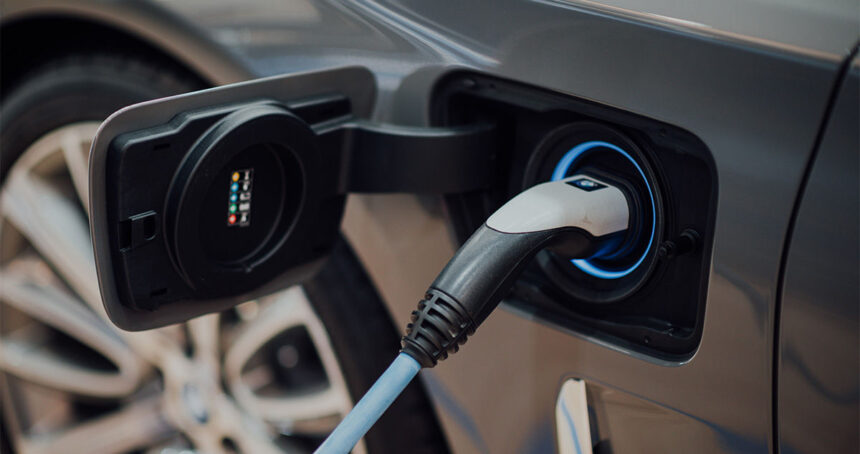Key Takeaways
- Fast charging solutions are pivotal in accelerating the adoption of electric vehicles (EVs).
- Technological advancements are continuously enhancing charging infrastructure.
- Fast chargers play a significant role in reducing “range anxiety” for EV owners.
Introduction to Fast Charging
Fast charging has become a cornerstone in the rapidly expanding electric vehicle (EV) sector, responding to the modern driver’s need for speed and convenience. As the number of electric vehicles on the roads continues to rise, the demand for efficient and accessible charging options, such as high-speed DC fast chargers, is escalating. These chargers can replenish a vehicle’s battery in mere minutes, offering a significant improvement over traditional charging methods. The ability to swiftly recharge an EV is not only a matter of convenience but also a crucial factor in persuading the masses to adopt electric vehicles. With environmental awareness on the rise, fast charging solutions stand as a pivotal innovation that propels both consumer adoption and the advancement of cleaner transport technologies.
The Importance of Charging Speed
For many potential EV buyers, the speed at which a vehicle can be charged is not just a convenience but a necessity. In today’s fast-paced world, waiting for hours to charge a vehicle is not feasible for most users, especially those relying on their vehicle for daily commutes or long-distance travel. The convenience factor provided by fast chargers can significantly influence the decision-making process for those considering the switch from conventioal combustion engines to electric alternatives. Fast charging also plays a crucial role in alleviating ‘range anxiety’—the fear that a vehicle doesn’t have sufficient range to reach its destination. By minimizing the downtime associated with charging, fast charging systems provide peace of mind for drivers, making electric vehicles a more appealing option.
Innovations in Fast Charging Technology
The technologies underpinning fast charging are ever-evolving, with substantial advancements enhancing both efficiency and accessibility each year. Companies are heavily investing in innovative solutions that push the boundaries of what fast charging can offer, such as higher power delivery rates and smarter energy management software. These advances make fast charging systems more user-friendly and broadly available, catering specifically to the growing demand within densely populated urban areas and beyond. Recently, developments in battery technology have also complemented these charging advancements, allowing for quicker and safer power transfer without compromising battery life. As these technologies advance, they set new standards and drive the industry forward, paving the way for robust EV infrastructure that meets future consumption needs.
Environmental Benefits of Fast Chargers
Fast chargers are not only about speed and convenience; they also play a fundamental role in fostering environmental sustainability. As they support the adoption of electric vehicles, fast chargers contribute to a significant reduction in global carbon emissions. Unlike fuel-powered vehicles that emit greenhouse gases contributing to air pollution and climate change, electric vehicles charged using renewable energy sources present an eco-friendly alternative. By lessening reliance on fossil fuels and promoting the use of cleaner energy, fast chargers contribute directly to creating a healthier planet. Moreover, as the technology develops, there is potential for integrating sustainable energy sources, such as solar power, into the fast charging network, further reducing the carbon footprint of electric vehicles.
Infrastructure Challenges and Solutions
Despite the myriad benefits that fast chargers provide, their widespread deployment presents several infrastructure challenges. Key issues include the current grid capacity and the sparse availability of charging stations, which can hinder the seamless introduction of fast charging systems globally. As the number of EVs increases, so too does the strain on electrical grids, necessitating significant upgrades and thoughtful energy management. Innovative solutions are being trialed and implemented to address these issues, with efforts including increased investment in grid modernization technology and the strategic distribution of charging stations in high-demand areas. According to resources such as Energy.gov, collaborative efforts between government entities, private sector players, and tech innovators are critical for creating a resilient and far-reaching charging network capable of supporting the EV revolution.
The Role of Fast Charging in Urban Planning
Fast chargers are increasingly woven into the fabric of urban planning as cities reimagine their layout to support sustainable transport solutions. The integration of charging stations into public spaces, commercial areas, and residential complexes is rapidly becoming a priority, ensuring EV accessibility for all city residents. This strategic planning considers numerous factors, such as traffic flow, population density, and energy distribution, to maximize the efficiency and usability of the charging infrastructure. Through thoughtful urban design, municipalities can ensure that their cities are equipped to support a burgeoning number of EVs and become leaders in sustainable urban living and environmental consciousness.
Future Trends in Fast Charging
The future of fast charging is brimming with potential innovations that promise to make the process even more seamless and integrated into everyday life. Upcoming trends include wireless charging technology, which could eradicate the need for physical connections and cables, further enhancing user convenience. Additionally, the integration of artificial intelligence in energy management systems may optimize power usage to enhance charging efficiency while reducing operational costs. Such technologies can offer tailored charging experiences based on individual user preferences and needs. Finally, as renewable energy becomes more integrated into the grid, fast charging will play an essential role in balancing and distributing this clean energy, making the future of transport faster and remarkably greener.
Conclusion: A Charged-Up Future for EVs
The path forward for transportation is clear: as fast charging becomes more ubiquitous, the electric vehicle ecosystem will grow stronger. These advancements in fast charging technology offer not only a logistical solution to current transportation challenges but also set a precedent for a more sustainable future. Through innovation, collaboration, and strategic planning, it is evident that the transition to electric vehicles is not only feasible but essential. As society continues to prioritize environmental health and user convenience, fast chargers will undoubtedly lead the charge toward a future where clean, efficient, and accessible transportation is a reality for all.






